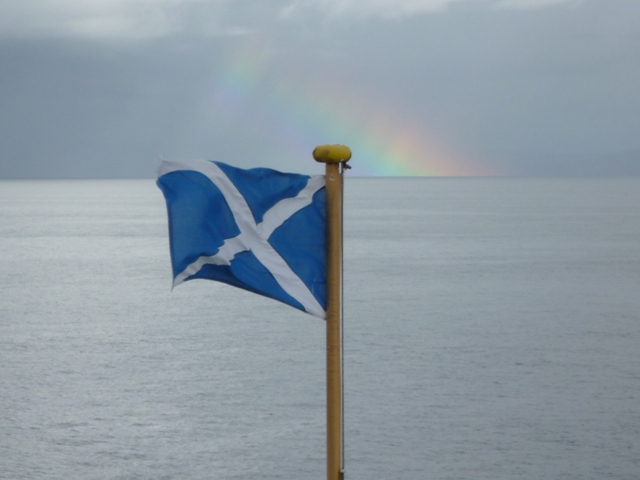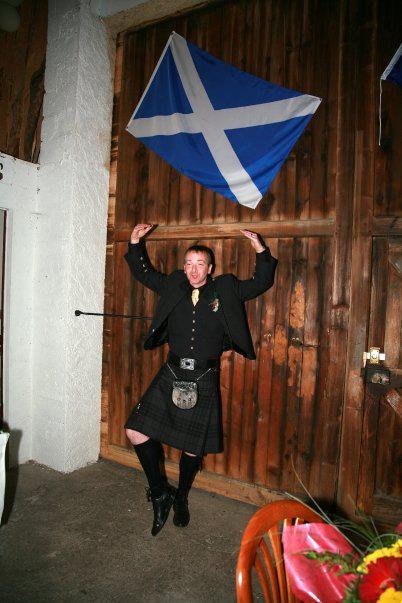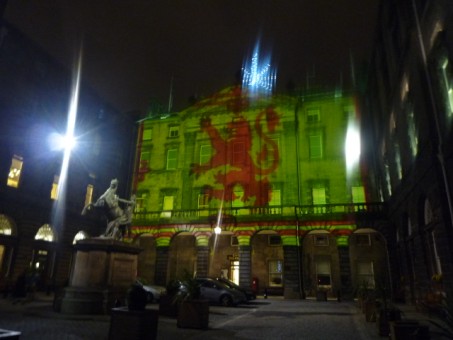Scotland Travel Blog November 2013
"St Andrew's Night"
In my previous Blog I mentioned that October was a month that could sometimes surprise you with “days when the sun comes out and it seems that summer is maybe going to cling on a bit longer”. Well November in Scotland is a month which doesn’t make any attempt to soften the message that Winter is coming. In my opinion, November is the dreariest month for visiting Scotland. The days get shorter, the temperature starts to drop and the trees loose all their leaves. There’s not much to celebrate in November and the only consolation is St Andrew’s night on the 30th November, which is what this blog is going to be about.
So why is St Andrew connected Scotland?
The connection between St Andrews and Scotland goes all the way back to the 4th century when, according to legend, a monk called St Rule (he has a tower named after him in St Andrews) had a dream in which he was told to take the bones of St Andrew (he of the 12 Apostles) and carry them to “the utmost ends of the earth”. Well back in the 4th century, Scotland was considered to be the end of the world so St Rule set off from Greece in his boat and then got shipwrecked on the coast of Fife.
Fortunately, St Rule managed to rescues the relics of St Andrew and he built a chapel to house them at the place we now call St Andrews. Of course, relics of the 12 Apostles seem to have been quite abundant in the 4th century so we maybe didn’t get the real St Andrew’s bones, but stories spread of their healing powers and pretty soon the chapel became a major place of pilgrimage.
How did St Andrew become the Patron Saint of Scotland?
The story behind this is a bit fanciful, but it is a good story and life is more interesting with a good story. Back in the early 9th century, Scotland was divided into the kingdoms of the Picts and Scots. What these two kingdoms shared was a common enemy, the Saxons who were invading from the south.
In 832 AD, a small army consisting of both Scots and Picts joined forces to battle with a much larger force of Saxons. The battle took place near Athelstaneford, which is ~15 miles east of Edinburgh. Whilst praying before the battle, a cloud formation was seen to take the shape of the cross of St Andrews. The Picts and Scots took this as a sign that St Andrew was on their side and they went on to win a great victory over the Saxons. Hence St Andrew became patron saint of Scotland and the white cross of St Andrew on a sky blue background was adopted as the flag of Scotland.

OK, it’s maybe not an entirely true account of how it all came to be, but it is a good story and a bit more credible than some guy killing a dragon!
What happens on St Andrews Night?
Unlike a Burns Supper, there really isn’t a set format for a St Andrews night celebration. With the advent of the devolved Scottish Government in Edinburgh, there has been an increased sense of Scottish identity and more effort has gone into the celebration of St Andrew’s night.
If you are in Scotland on the 30th November, you will find some St Andrew’s night parties going on. These will usually take the form of a ceilidh, with country dancing, a bit of swing yer kilt music, whisky and haggis (which can be served in all sorts of forms including haggis pizza)… oh yes, it is available in the supermarkets already!

Where’s the best place to celebrate St Andrews in 2013?
This year the place to be is going to be the Grassmarket in Edinburgh. From 2pm to 10pm the Grassmarket is going to be the centre of a programme of free entertainment including big names like Dougie MacLean who wrote Scotland’s other national anthem “Caledonia”. Learn the words of this and sing along with the crowd, it’ll be something to remember.

Historic Scotland is also offering free admission to 35 of its top properties (including Edinburgh Castle), but you need to act fast as ticket numbers are limited and you need to book them online before 5pm on the 29th November. You can book your free tickets online here.
Is it National Holiday in Scotland?
St Andrew’s day has never really been as widely celebrated as Burn’s Night, but it did start to be an official bank holiday in 2007 although not many people get the day off work.
After the 18th September 2014, we will hopefully be having a new national holiday for celebrating Scotland’s Independence Day!
